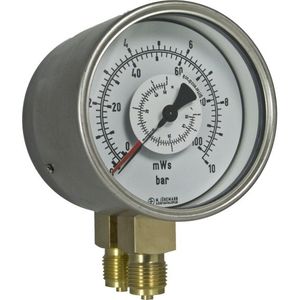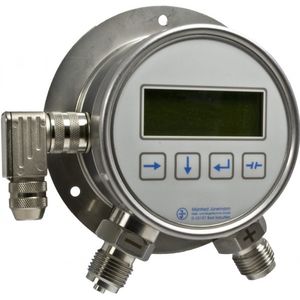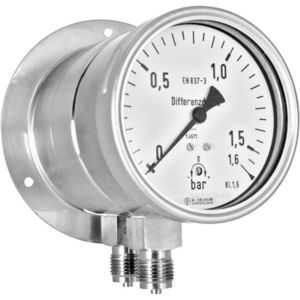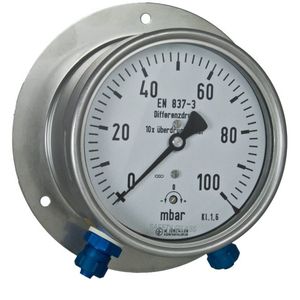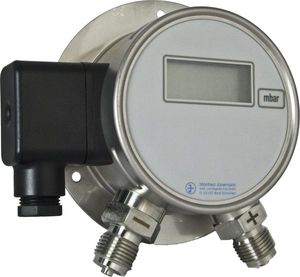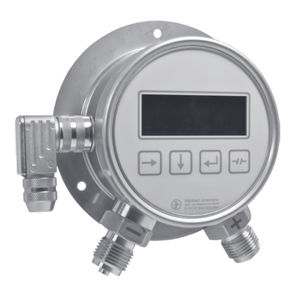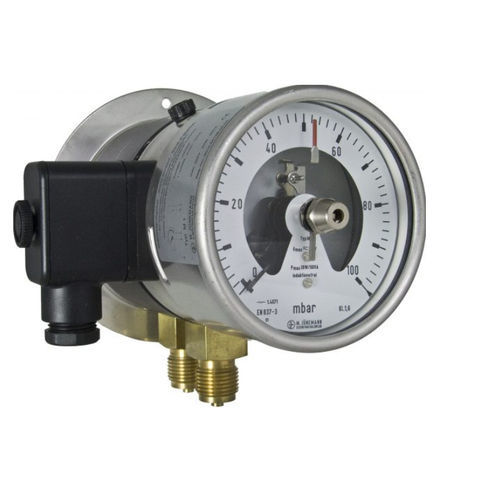
- Detection - Measurement
- Flow, Pressure and Level Measurements
- Relative pressure gauge
- Manfred Jünemann Mess- und Regeltechnik GmbH
Relative pressure gauge DM10 differentialdialbrass

Add to favorites
Compare this product
Characteristics
- Pressure type
- differential, relative
- Display
- dial
- Material
- stainless steel, brass
- Technology
- diaphragm
- Protection level
- IP54
- Other characteristics
- adjustable
- Pressure
25 bar
(362.59 psi)- Dial diameter
100 mm, 160 mm
(3.9 in, 6.3 in)- Process temperature
Min.: -20 °C
(-4 °F)Max.: 60 °C
(140 °F)
Description
without liquid filling
Service intended:
Suitable for gaseous and liquid, non-crystallizing media that will not obstruct the pressure system. Scale range must be selected in consideration of the highest static pressure applied. These alarm contacts are intended to make or break am electrical control circuit relative to the position of the instruments pointer. The functions of the different contacts may be chosen depending on application. Points of contact actuation are adjustable over the full extension of the scale graduation. For points with high, dynamic load, fast load alternation and pressure peaks or vibration we recommend a special oil filled type (only available with round case model).
Fields of application:
● pneumatics, hydraulics
● heating and air conditioning technology
● Filter measurements
Construction:similary EN 837-1
Case:Ø 100 and 160 mm stainless steel
Protection class:IP 54 per EN 60529 / IEC 529
Pressure connection:2 x G1/2B, parallel behind, brass identified + and -
Pressure element
Diaphragm element : stainless steel 316L, NBR/PA, pressure chambers, alu, with exhaust
Movement:Base and cover plate, brass Dive Shaft, nickel silver
Pointer:Aluminium, black
Dial:Aluminium white, scale and lettering black
Window:instrument glass
Zero point adjustment:Adjusting screw in dial
Accuracy class:class 1,6 / 2,5
Catalogs
R10
22 Pages
Other Manfred Jünemann Mess- und Regeltechnik GmbH products
Differential pressure gauges
Related Searches
- Pressure gauge
- Analog pressure indicator
- Threaded pressure gauge
- Stainless steel pressure indicator
- Bourdon tube pressure gauge
- Dial pressure indicator
- Process pressure indicator
- Gas pressure indicator
- Waterproof pressure gauge
- Differential pressure indicator
- Digital pressure indicator
- Liquid pressure gauge
- Absolute pressure indicator
- IP65 pressure indicator
- Brass pressure gauge
- Precision pressure indicator
- Pressure gauge for hydraulic applications
- Aluminum pressure gauge
- Diaphragm pressure indicator
- Diaphragm seal
*Prices are pre-tax. They exclude delivery charges and customs duties and do not include additional charges for installation or activation options. Prices are indicative only and may vary by country, with changes to the cost of raw materials and exchange rates.



